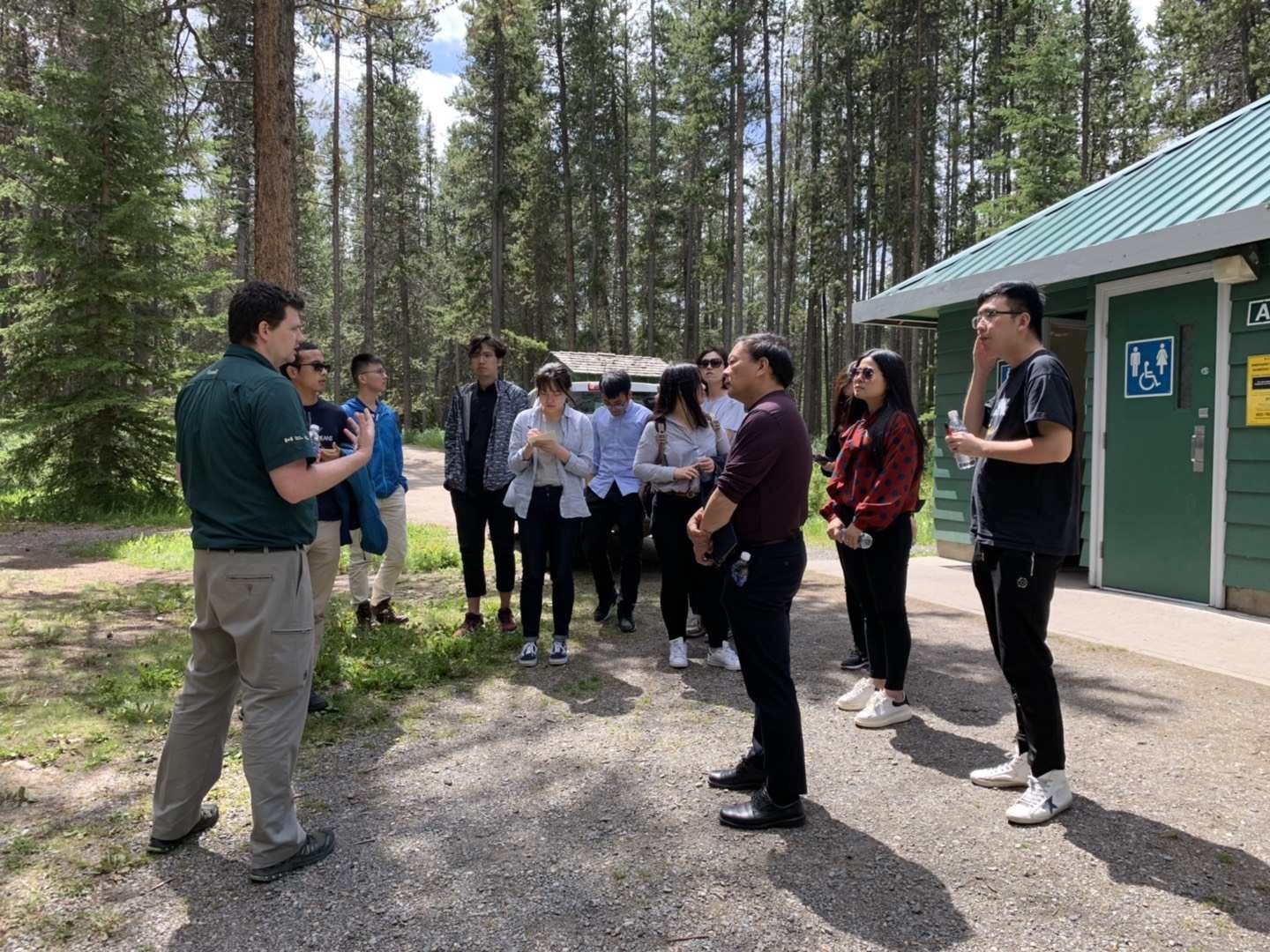Visitor Experience and Visitor-wildlife Conflicts in National Parks
Project Team:
Dr. Guangyu Wang
Dehui Christina Geng, PhD Student
1. Visitor Experience and Sustainable Tourism Management in National Parks
Visitor experience in the national park is important, as high-quality experiences can contribute to visitor loyalty, tourism sustainability, brand promotion and community support. It is of great significance to understand the factors that contribute to the visitor experience, as well as the seasonal variation in visitor satisfaction in order to help park managers prioritize appropriate and effective policy and management decisions to enhance the visitor experience and promote sustainable tourism.
The four principal research objectives include: i) to identify key factors influencing visitor experience, ii) to build a structural equation model (SEM) and analyze the interrelated relationship between tourism demographic profile, visitor expectations and satisfaction, visitor loyalty, as well as visitor environmentally responsible behaviour (ERB), iii) to compare seasonal variation of visitor satisfaction in national parks, and iv) to provide recommendations on visitor experience management, visitor service design and plan, marketing strategy to achieve sustainable tourism in national parks.
Several park attributes can influence the level of the visitor experience, including the quality of park infrastructure, park facilities and services, park activity arrangements, as well as park natural characteristics. Results show that park infrastructure quality is the most important factor in determining visitor experience, and visitors have the highest satisfaction level on natural characteristics in Banff National Park. Based on how these drivers contribute to visitor satisfaction, this research provides recommendations for visitor experience management in national parks based on the results of the SEM and regression relationship.
Seasonality is another great challenge affecting sustainable tourism, which represents a temporal and spatial imbalance such as a higher amount of visitors for a specific period of a year, with fewer visitors during its off-season. For a national park to reduce the negative impacts of seasonality and be competitive, it is very important to evaluate visitor satisfactory experience at any time of the year. Therefore, our study also compares the visitor satisfaction level in both high-season and off-season to analyze seasonal variation in national park visitor satisfaction and provide management recommendations in terms of both visitor experience management and park marketing strategies.
2. Conflicts and Coexistence Between Visitor and Wildlife in Banff National Park

 Visitor-wildlife conflict is defined as the conflict that occurs between visitors and wildlife, including actions by human or wildlife that have an effect and potentially pose threats on wildlife or visitors’ life, recreational security and ecosystem health. Visitor and wildlife conflicts need to be paid more attention in national parks especially with increasing tourism. With an estimated 3.8 million visitors coming to Banff National Park, the frequency and severity of visitor-wildlife conflicts are in an increasing trend in recent years.
Visitor-wildlife conflict is defined as the conflict that occurs between visitors and wildlife, including actions by human or wildlife that have an effect and potentially pose threats on wildlife or visitors’ life, recreational security and ecosystem health. Visitor and wildlife conflicts need to be paid more attention in national parks especially with increasing tourism. With an estimated 3.8 million visitors coming to Banff National Park, the frequency and severity of visitor-wildlife conflicts are in an increasing trend in recent years.
Therefore, there are four objectives of this study, including i) to identify the current state of visitor-wildlife conflicts within Banff National Park, ii) to produce a visitor-wildlife interface ArcMap and determine which areas have high probabilities of visitor-wildlife conflicts, iii) to develop the insights of visitor service design and management strategies to reduce conflicts and enhance both wildlife biodiversity and visitor experience to achieve visitor-wildlife coexistence in Banff National Park.
Research Contribution
Geng, D. C., Innes, J. L., Wu, W., Wang, W., & Wang, G. (2021). Seasonal Variation in Visitor Satisfaction and Its Management Implications in Banff National Park. Sustainability, 13(4), 1681. https://doi.org/10.3390/su13041681
Geng, D. C., Innes, J., Wu, W., & Wang, G. (2020). Impacts of COVID-19 pandemic on urban park visitation: a global analysis. Journal of forestry research, 32(2), 553-567. 10.1007/s11676-020-01249-w
Hong, X. C., Zhu, Z. P., Liu, J., Geng, D. H., Wang, G. Y., & Lan, S. R. (2019). Perceived Occurrences of Soundscape Influencing Pleasantness in Urban Forests: A Comparison of Broad-Leaved and Coniferous Forests. Sustainability, 11(17), 4789. https://doi.org/10.3390/su11174789
Geng. D. et al.. (2019). Factor influencing visitor experience in national parks: A case study of Banff National Park. Journal of Outdoor Recreation and Tourism. (under review)
Geng, D., Wu, W. & Wang, G. (2020). Visitor Experience and Environmentally Responsible Behavior in National Parks: A Structural Equation Model (in preparation)
Geng, D., Wang, R., Wu, W & Wang, G. (2020). Human-wildlife conflicts in Banff National Park: A spatial and temporal analysis (in preparation)
Geng, D., Shrestha, A., Han, A. Wu, W. & Wang, G. (2020). Hotspot analysis of visitor-wildlife conflicts in Banff National Park. (in preparation)
